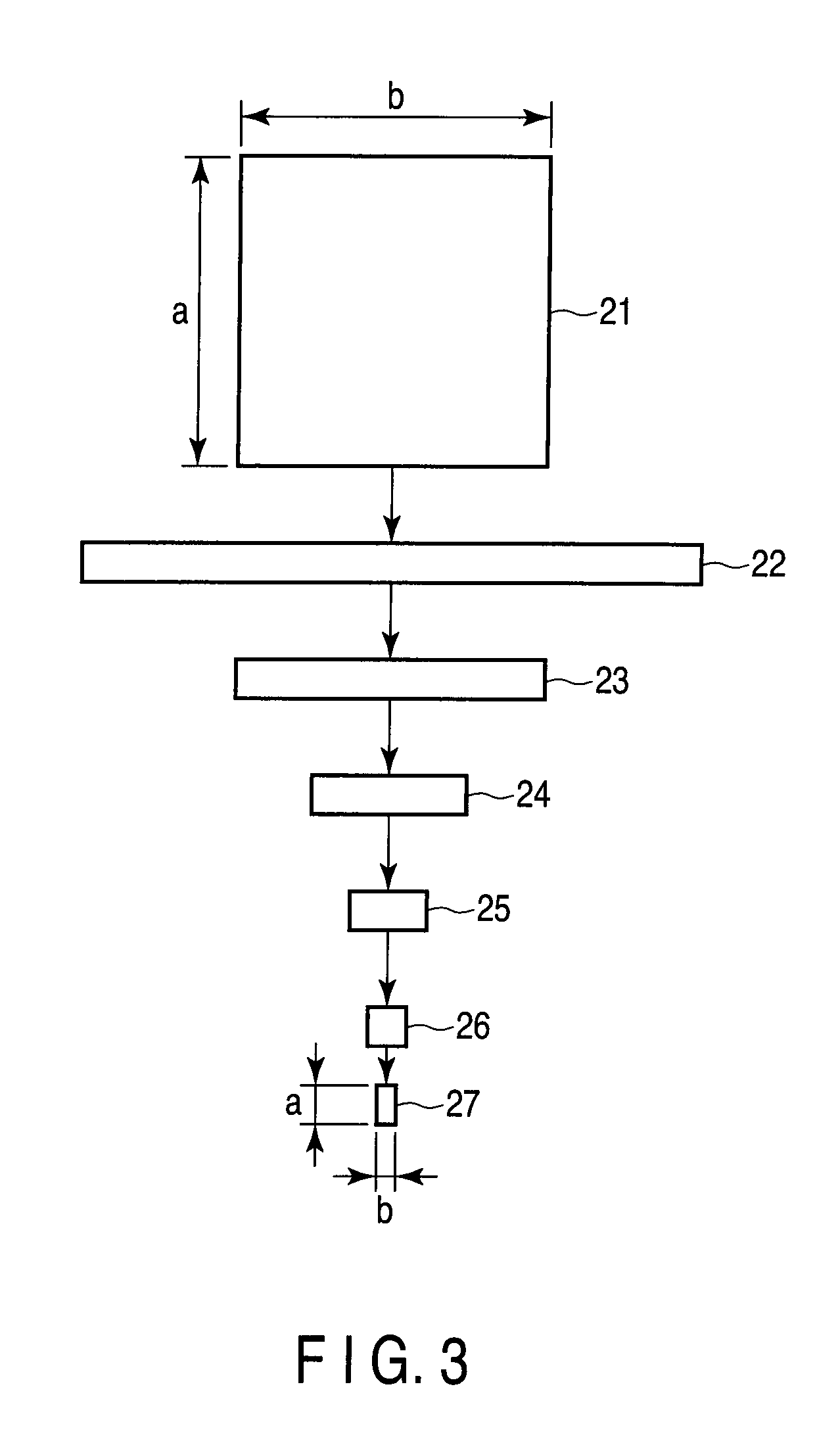Fuel cell
- Summary
- Abstract
- Description
- Claims
- Application Information
AI Technical Summary
Benefits of technology
Problems solved by technology
Method used
Image
Examples
first embodiment
[0059]First, the schematic outline of the overall fuel cell will be described with reference to FIG. 1.
[0060]A fuel cell 1 according to a first embodiment is covered with an outer case 18 and a distribution plate 30 of a fuel distribution mechanism 3, and a membrane electrode assembly (MEA) 2 is accommodated in the fuel cell 1. The outer case 18 and the distribution plate 30 are screwed together, with the MEA 2 sandwiched therebetween, and the ends of the outer case 18 are caulked to the distribution plate 30, thereby integrating them. A pair of O-rings 19 is disposed on the periphery of the MEA 2, thereby sealing the space between the outer case 18 and MEA 2 and also the space between the distribution plate 30 and MEA 2, thus preventing fuel inside from leaking.
[0061]The MEA 2 is a power generating element that has a multi-polar structure including a plurality of strips of single electrodes (unit cells) arranged on substantially the same flat surface and electrically connected in s...
second embodiment
[0097]Referring to FIGS. 6 to 12, the second embodiment will next be described. Explanations of parts identical to those in the first embodiment are omitted.
[0098]As shown in FIG. 6, a fuel cell 1A according to the present embodiment comprises a fuel distribution mechanism 3A different from that of the fuel cell 1 in the first embodiment. As shown in FIG. 7, the fuel cell distribution mechanism 3A comprises a distribution plate 30A. The distribution plate 30A comprises: one fuel inlet 31; a plurality of fuel outlets 27a for discharging fuel toward an anode 13; and fuel passages 20 to 27 communicating with one another in order to circulate fuel from the fuel inlet 31 to the fuel outlets. The fuel passage comprises: an introduction tube 20 communicating with the fuel inlet 31; upstream fuel passages 21 communicating with the introduction tube 20; and first to sixth branch passages 22 to 27 diverging one after another in sequence from the upstream fuel passages 21. The fuel inlet 31 co...
example
[0119]The present Example uses a fuel distribution mechanism 3 that has the same disposition of the fuel passages 20 to 27 shown in FIG. 7. An introduction tube 20 has a square cross-section of 400-μm height×400-μm width×400-μm length. The inside of each upstream fuel passage 21 is partitioned into four branch passages 21a to 21d, as shown by (a) in FIG. 3 and the Table 1, so as to have a cylindrical section with a diameter of 100 μm and a length of 45 mm.
[0120]The first branch passage 22 is 25 mm long and has a rectangular cross-section whose height “a” is 50 μm and width “b” is 800 μm. The second branch passage 23 is 14 mm long and has a rectangular cross-section whose height “a” is 50 μm and width b is 400 μm. The third branch passage 24 is 5 mm long and has a rectangular cross-section whose height “a” is 50 μm and width “b” is 200 μm. The fourth branch passage 25 is 6 mm long and has a rectangular cross-section whose height “a” is 50 μm and width “b” is 100 μm. The fifth branch ...
PUM
 Login to View More
Login to View More Abstract
Description
Claims
Application Information
 Login to View More
Login to View More - R&D
- Intellectual Property
- Life Sciences
- Materials
- Tech Scout
- Unparalleled Data Quality
- Higher Quality Content
- 60% Fewer Hallucinations
Browse by: Latest US Patents, China's latest patents, Technical Efficacy Thesaurus, Application Domain, Technology Topic, Popular Technical Reports.
© 2025 PatSnap. All rights reserved.Legal|Privacy policy|Modern Slavery Act Transparency Statement|Sitemap|About US| Contact US: help@patsnap.com



